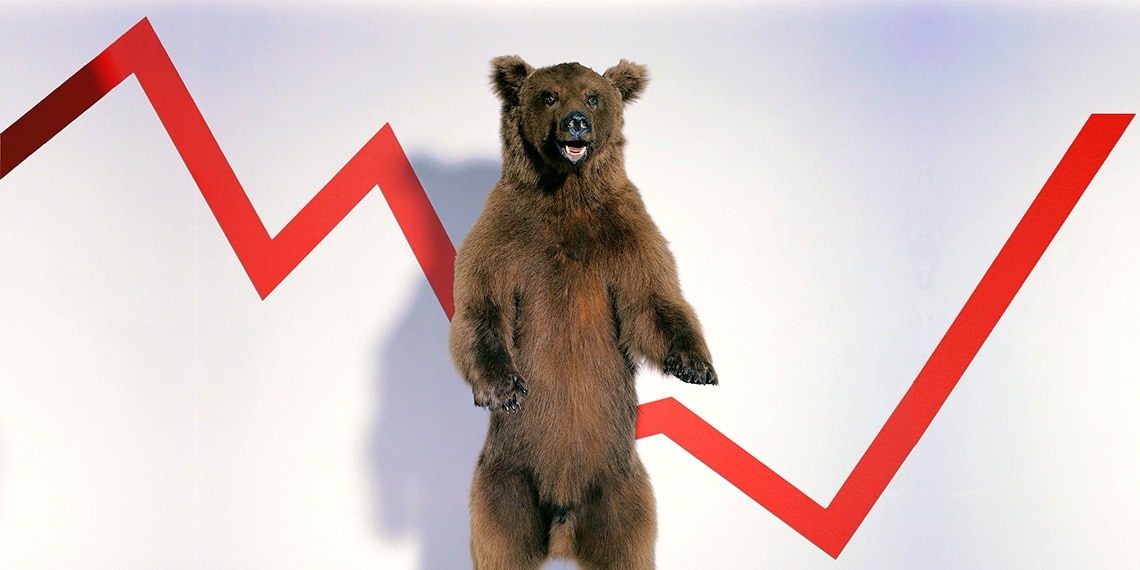
It’s been a year since a global health emergency was declared in the United States due to the coronavirus. The start of the pandemic last March put the Dow in a “bear market” for the first time in over a decade.
A 20% market decline (or more) marks a bear market. That can spook investors, causing them to sell stocks or other securities in favor of cash, certificates of deposit (CDs) or other low-risk options.
Is fleeing stocks during a bear market the best response?
The stock market fluctuates in value from day to day in an unpredictable way, making timing the market nearly impossible to do even in a bull market.
Even if timing the market were possible, it wouldn’t produce markedly better results than consistent investing. One analysis of historical returns found that an investor blessed with the ability to buy near the bottom of every major stock market crash—the ultimate “buy low” strategy—would end up with only slightly more money than an investor who invested consistently over the same, four-decade period. Time in the market gave the regular investor the benefits of compound growth, without the need for clairvoyance.
How can you protect—and even enhance—your portfolio for the long term during a bear market? Here are five steps to follow.
1
Know Yourself and Your Timeline
Consider your age, your long-term goals and your proximity to retirement. As you know, all financial products carry some risk. But some investments, such as stocks, are riskier than other types of products, such as CDs. In a bear market, a consistent stock investing strategy can help you work toward your long-term goals, including retirement. But the closer you get to retirement, the more it becomes a short-term goal, making it important to focus on preserving your financial assets. If there’s a bear market before your retirement, you may want to move some assets into less risky investments to focus on preservation, unless you want to delay retirement until the market bounces back.
2
Remember Your Risk Tolerance
Remember that the higher your risk tolerance, the more likely your investments are to fluctuate in value over time. A portfolio designed for high returns will likely have a large percentage of equity investments, the prices of which usually vary the most during bear markets. That short-term fluctuation probably won’t harm the chances you reach your long-term goals, but if you also have short-term goals, such as buying a new car, consider CDs or high yield savings accounts to balance your portfolio. Generally, younger investors tend to have a higher tolerance for risk because they have more time to make the money back if something goes wrong.
3
Buy at a Discount
Consider that stocks are “on sale” during a bear market. The stock market has recovered from each crash in history and ultimately gone on to produce positive, long-term returns for investors. When stock prices fall, you can buy more shares for the same price, making it a good time to increase your contributions to a retirement account. If boosting your contribution all at once feels like too much, you can do so in increments or check to see if your employer has an automatic escalator that increases your contribution rate for you. If you own individual stock and plan to hold onto it through the bear market, this may also be a good time to buy more individual shares.
4
Reevaluate Your Goals Against Your Portfolio
When the market dips, compare your investment portfolio to your goals, paying special attention to your risk tolerance and how much time you have before you need your money. A bear market might not prevent you from reaching your long-term goals if retirement is still a long way away. Still, it’s a good time to check that you don’t have too much of your portfolio concentrated in one asset type. If, for example, you have a large share of your money in U.S. large cap stocks, and they decline, your portfolio could take a hit.
5
Keep Some Cash
It’s always a good idea to have enough cash on hand to cover your needs for the next year. Don’t forget to include funds for emergencies. We all wish they wouldn’t happen, but, unfortunately, that doesn’t prevent them.
Overall, how you ultimately handle investing in a bear market should depend on how you set up your investment strategy. Having a clear vision of your long- and short-term financial goals, along with an understanding of your risk tolerance, will help you to reevaluate your positions or weather the storm. But thinking about a bear market before you’re in the middle of one will be essential to deciding what to do with your investment portfolio. Finally, remember that investing involves risks and you should consider consulting with your financial advisor or financial planner before making or changing any investments.
Elizabeth Whalen is a freelance writer based in Berkeley, CA. She loves writing about business, financial services and sustainability.

